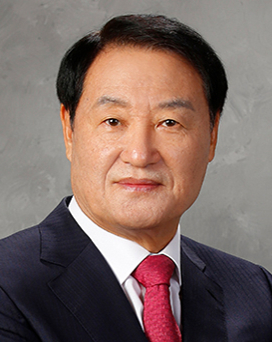Where are our nuclear-powered subs?

Kim Tae-woo
The author is a senior research fellow on nuclear policy at the Korea Institute for Military Affairs (KIMA).
On Sept. 6, North Korea proudly unveiled its “first tactical nuclear attack submarine,” named after its military hero Kim Kun-ok. At that time, a number of Western military experts were shocked at its weird appearance resembling a “monster fish.” Some analysts guessed the North may have hammered out the 3,000-ton-class submarine by modifying the 1,800-ton Romeo-class sub in the Soviet era to ram as many as 10 vertical launch tubes — four large and six small — into the sub. Others assessed that the tactical attack submarine would require additional technological breakthroughs before ensuring stable operation under the sea. Not surprisingly, the attack sub was nicknamed Frankenstein by Western military analysts.
Nevertheless, the stark security environments around the Korean Peninsula do not permit South Korea to sit back and make fun of the sloppiness of the new submarine. Once nuclear-tipped missiles are mounted on the sub, it will certainly pose a grave security threat to South Korea and East Asia. Given the ever-evolving North Korea-Russia rapprochement — as perfectly evidenced by the bromance between North Korean leader Kim Jong-un and Russian President Vladimir Putin in an advanced space base in Russia on Wednesday — and considering the possibility of the Kremlin giving the highly sensitive missile technology to Pyongyang, the rest of the world may soon see nuclear-powered ballistic missile subs (SSBNs) with North Korean flags.
Our navy has so far widened a qualitative gap with the North’s out-of-date submarine fleet by consecutively acquiring 1,200-ton-class and 1,800-ton-class modernized submarines through the Jangbogo-I and II projects. Our navy is now building highly sophisticated subs over 3,000 ton through the Jangbogo-III project.
Without nuclear weapons installed on the subs, however, such technological superiority is like “burgers without meat.” That’s why many South Koreans are asking, “Where are our SSBNs?” But unfortunately, the South has refrained from embarking on building a nuclear-powered submarine, not to mention developing a nuclear bomb, for decades.
Currently, the United States is developing Columbia-class SSBNs and other nuclear-powered submarines (SSNs) to replace Ohio-class SSBNs and Los Angeles-class and Virginia-class SSNs to effectively counter the increasingly formidable marine threats from the “axis of tyrannies.” Concurrently, the United States is helping Australia build and operate SSNs within the Aukus framework. But Canberra’s submarine project seems to be ridden with many uncertainties owing to the shortage of its ship-building infrastructure, financial difficulties, anti-nuclear activities by civic groups, not to mention the lukewarm attitude of the newly inaugurated Labor government.
By comparison, South Korea has much more competitive ship-building infrastructure and wants to have “hunter-killer” SSNs to check the North’s deepening underwater threat. It would be a better idea for the United States to cooperate with South Korea over its SSN building rather than to dissuade it.
Building and operating SSNs needs complex elements such as operating know-hows, crew training and disposal of radioactive wastes on top of the ship building infrastructure and fund. More importantly, it requires the revision of the ROK (South Korea)-U.S. Atomic Cooperation Agreement that prohibits South Korea’s uranium enrichment without U.S. consent. The accord effectively blocks Korea’s own development of nuclear propulsion systems. This is why U.S. cooperation is important more than ever.
To be honest, it is unfair that Washington — which allowed Japan’s nuclear enrichment and reprocessing activities through the Comprehensive Consent 35 years ago — continues to shackle the same activities by South Korea until now. Such double standards will certainly have a chilling effect on the alliance and the spirits of the Aug. 18 Camp David summit through which the three like-minded countries — South Korea, the United States and Japan — vowed to step up their trilateral security cooperation.
In this context, the confirmation of “South Korea’s continued commitment to the ROK-U.S. Atomic Cooperation Agreement and the Nuclear Nonproliferation Treaty” in the April 26 Washington Declaration may have been a strategic mistake since such an open pledge only helps embolden adversaries. Instead, the two allies should have used “unknown possibilities” as strategic leverage. Today’s alarming developments around the Korean Peninsula — such as the deepening neo-Cold War confrontation structure, Pyongyang’s growing nuclear threat, and the emergence of the nuclear attack sub in North Korea —all compels Seoul to realize that the SSN building requires urgent attention. The submarines to be built through the Jangbogo-III project should be nuclear-propelled to effectively deal with the North’s mounting security threat by revising the ROK-U.S. atomic accord through strategic dialogue with Washington.










with the Korea JoongAng Daily
To write comments, please log in to one of the accounts.
Standards Board Policy (0/250자)